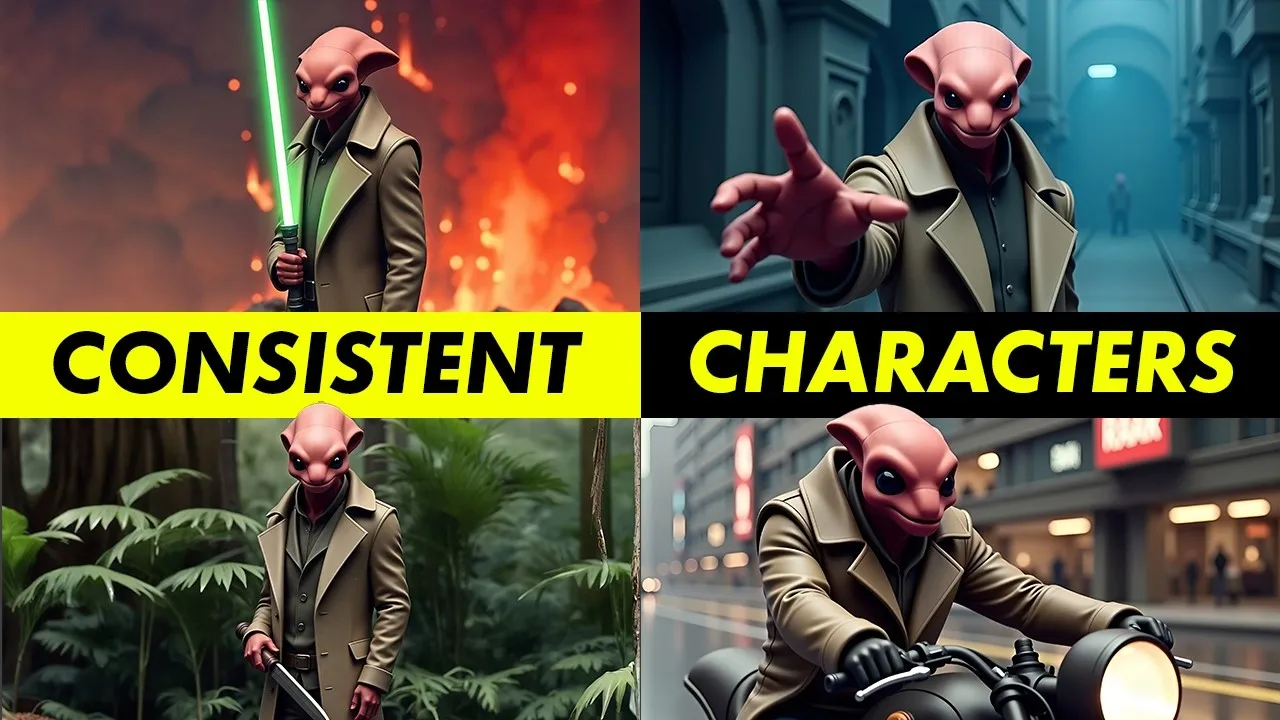Create Consistent Characters for Ai Stories with FLUX!
People & Blogs

Introduction
Creating consistent characters is one of the significant challenges when using AI for storytelling, particularly in AI-generated films. This article will guide you through a method to build characters that maintain their look and feel across various settings, expressions, and situations, ensuring they remain visually cohesive throughout your narrative. By using a small dataset and training a custom FLUX model, you can generate these characters effectively.
Step 1: Generate a Character Reference Sheet
The first step is to create a character reference sheet using an AI image generator, like OpenArt. Here, you'll start in the image creation tab and select a high-quality image model, such as the FLUX Dev model.
Prompting the AI
For your character reference sheet, craft a detailed prompt that specifies multiple views of the character, along with a clear description. For example, you might describe your character as "an alien creature with pale red skin wearing a khaki peacoat."
You can increase the number of images generated if desired, aiming for a range of angles and poses. Download the generated character sheet and use the upscaler tool to boost the image resolution.
Extracting Character Data
From this character sheet, gather at least three images, but aim for more if possible. Use editing software like Paint to crop out individual body poses and close-up headshots. You can also flip the images horizontally to double the dataset for training purposes, resulting in a robust data collection.
Step 2: Train a Custom Flux Model
Navigate back to OpenArt and access the model training tab. Select the option to train your own model, giving it a name like "Red Alien" and a simple description such as "alien creature with pale red skin." Upload the cropped images you prepared earlier.
The training process is quick, often completed within ten minutes. Once trained, your custom model will appear in the interface, ready for image generation.
Step 3: Generating Images with Your Character
When generating new images, ensure to switch to your newly trained model. Use detailed prompts similar to those used for your character sheet, including the clothing description to maintain consistency. Specify camera angles and scenes, for example: “In a Star Wars setting, the alien is using the Force with their palm out, wearing a khaki peacoat.”
Image Enhancements
If the output images do not capture the full body as intended, you can adjust the aspect ratio and use the expand option within the image editor to fill in the frame correctly. By generating images in a vertical format and then expanding them, you’ll enhance your chances of obtaining a complete body shot.
Advanced Techniques for Human Characters
For human characters, you can employ similar methods. By using facial expression editing tools, you can generate various facial expressions and head directions, adding even more data to your training set. After editing, save these images, and incorporate them into your training dataset.
Conclusion
Training a custom FLUX model provides superior results compared to other AI systems for maintaining non-human character consistency. With this methodology, you can generate characters that shine in any narrative, equipped for varied settings and poses while retaining their distinct look.
Keywords
- Consistent Characters
- AI Storytelling
- FLUX Model
- OpenArt
- Character Reference Sheet
- Image Generation
- Custom Model Training
FAQ
1. What is the purpose of creating a character reference sheet?
A character reference sheet serves as a visual guide that provides multiple angles of your character, ensuring that they remain consistent across various generated images.
2. How do I ensure my character's clothing remains the same in every image?
When prompting the AI for new images, make sure to explicitly mention the character’s clothing as described in the reference sheet.
3. Can I generate different poses of my character using the custom model?
Yes, after training your FLUX model, you can generate diverse poses and scenes for your character while maintaining visual consistency.
4. What if my output images don't show the entire character?
You can adjust the aspect ratio in the image generator settings and use the image expansion tools to capture the full body of your character.
5. Is OpenArt free to use?
OpenArt provides free credits upon sign-up, but a paid plan is required to train a custom model.

